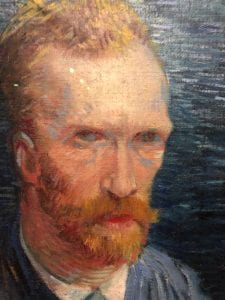Last week was fall break for art and architecture students abroad in Rome, our time to travel as we please for 10 days. Our journeys spanned from Ibiza to Madrid, Paris to Budapest, Croatia to Israel and Amsterdam. I went to Amsterdam after spending some quality time in la città di Roma with a friend who visited me from Ithaca. We explored the layers of this historically piled city, from the ruins of the colosseum and Roman forum, to the street art and botanical gardens of Trastevere. My friend was absolutely entranced by Rome and seeing it through her eyes, as well as having the uninterrupted time to explore re-grounded me in the privilege to live and create here.
When she left, I made my way to what felt like the opposite of Rome and it’s looming ancientness: Amsterdam. Now of course everywhere has their histories, but Amsterdam to the naked eye is all things hip and modern. Neon signs, concept stores, vegan and organic eateries abound. I didn’t love the city as much as everyone who thinks I’m the quintessential hipster (which I’m so not!) thought I would, but there was one highlight that left a precious mark on my heart and soul: the Vincent Van Gogh Museum.
I almost didn’t want to feel this way about such a mainstream artist, but the truth is there is no way to examine Van Gogh pairings and not feel like you are getting a magical look at a reality more real than that in front of our eyes; it is a reality that includes the spirit and body at once defined by bold emotional colors and brushstrokes. What struck me most, though, wasn’t just the quality and beauty of Van Gogh’s work, it was witnessing it next to his contemporaries and inspirations.
Looking at his paintings next to (contemporaries) n this I saw the artist experience and struggle of working against the grain, of daring to be different, a little louder a little rougher. His fellow impressionists were making comparatively soft and careful (extraordinary) pieces and I can see how in his time this approach appealed greater to the masses. But whether he couldn’t help it or didn’t want to, Van Gogh took Impressionism and set it on fire with anguish, joy, passion, fever. Before this museum visit, I kept a respectful and careful distance of admiration without immersing myself in Van Gogh, but in his museum I learned that he was driven and inspired similarly to the ways I am. For example I’m currently looking at Tibetan and other East Asian artworks, particularly prints, and Van Gogh was incredibly inspired by Japanese woodcuts. I was most moved by the way he copied one woodcut in his unique style, he didn’t hold back to match perfectly how the print was done, he didn’t bold back his brushstrokes or extreme use of color, he just painted what he saw and what he loved to look at the way that felt natural to him; represented in this is the artistic fearlessness in Van Gogh that I aspire greatly to attain.
On a final note though, I was left uneasy by the contrived and commercial museum space. I couldn’t stand the extravagance of the gift shop on every floor, with glass partitions and plush Van Gogh dolls. I couldn’t stand the loads of people just there to take pictures of the works from afar for their Instagram feeds, barely taking advantage of the privilege to truly look at the work which might as well be a completely different paintings than their digital reproductions. Foremost, I could not stand the haughty British voices of the headset that quoted Van Gogh’s writings with airy elegance, rather than the passion and angst represented in the way he underlined, bolded and enlarged certain words in the written reproductions. I believe Van Gogh’s works deserve to be displayed in a space more authentic to the his life and times, and I am in the midst of considering how this could be done.
by Margaret Groton



